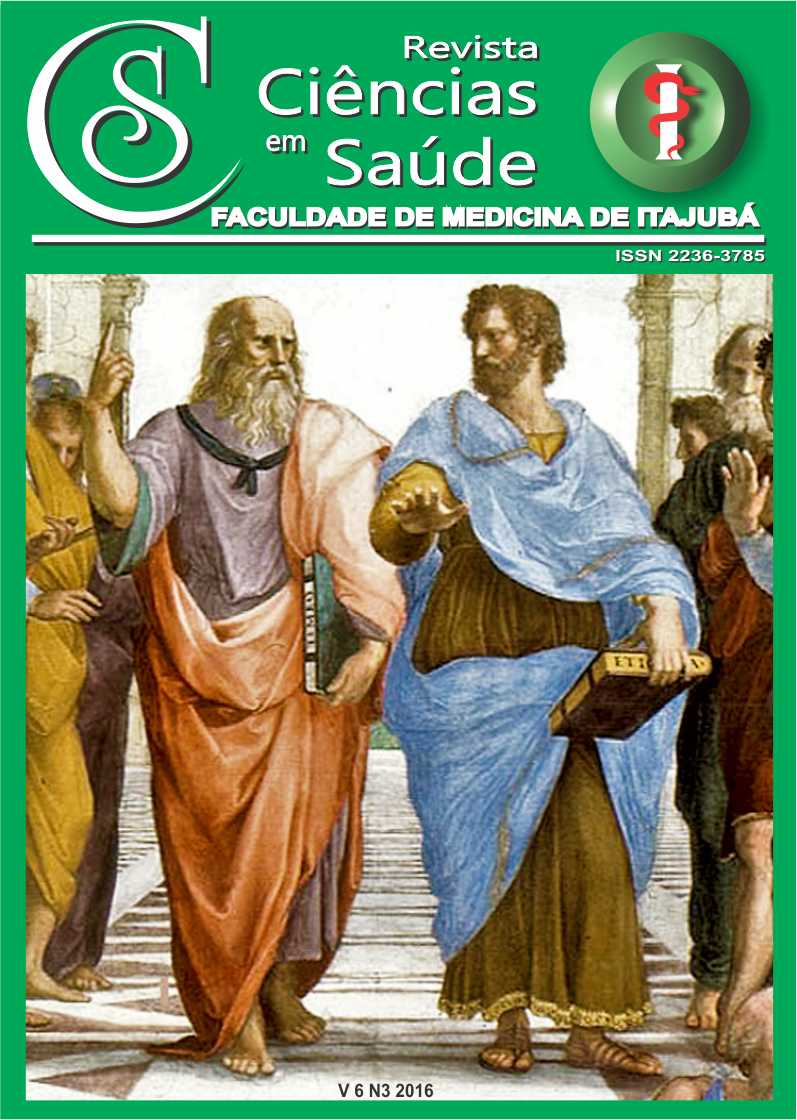Comportamento da Lordose Lombar no Exercício Resistido / Lumbar lordosis behavior in Resisted Exercise
Main Article Content
Abstract
Objetivo: Analisar a curvatura lombar durante a execução de exercícios resistidos. Materiais e Métodos: Foram analisadas 81 pessoas, durante a execução de cinco aparelhos diferentes de exercício resistido. Fez-se um registro fotográfico da coluna lombar durante os exercícios, seguido da análise de quatro variáveis: manutenção da lordose fisiológica, hiperlordose, retificação da curvatura e inversão da curvatura. Resultados: Em todos os aparelhos houve a modificação do comportamento da lordose lombar durante a execução dos exercícios. A manutenção da lordose fisiológica, correspondendo a uma posição não errônea ou aceitável, não foi significativa. No aparelho Cadeira Extensora, a manutenção correta da curvatura lombar durante o exercício resistido esteve presente em apenas 35,8%, sendo o aparelho em que menos se manteve a curvatura fisiológica e em que houve a inversão da curva como a modificação mais presente. O Aparelho Voador foi o que mais demonstrou a preservação da postura com uma porcentagem pequena de alteração (76,5%), seguido pelo aparelho Leg Press (preservação de 65,4%) e pelo Pulley Alto (64,2%). No aparelho Cadeira Flexora, pode-se observar um menor número de variedade dos tipos de curvaturas, estando presente apenas a hiperlordose e a lordose fisiológica, com predomínio de 61,7%, estando ausentes a retificação da curva e a inversão da curva. Conclusão: A prática do exercício resistido sem a manutenção da lordose lombar, seja ela por má orientação ou por carga excessiva, está presente na prática regular dos alunos submetidos a análise do presente estudo.
Palavras-chave: Curvaturas da Coluna Vertebral, Dor Lombar, Postura, Exercício, Esforço Físico, Levantamento de Peso
ABSTRACT
Objective: To analyze the lumbar curvature while executing resisted exercises. Material and Methods: A total of 81 subjects were analyzed during execution of five different resistance exercise devices. A photographic register of the lumbar spine during the exercise was performed, followed by data analysis of four variables: maintenance of physiological lordosis, hyperlordosis, rectified curvature and reversal of curvature. Results: It was found modification in lumbar lordosis behavior during the execution of all exercises. The maintenance of the physiological lordosis, which would be a not erroneous and acceptable position, was not significant. On the “Stretcher Chair” device, the correct maintenance of the lumbar curvature during resisted exercise was present in only 35.8%. It was the apparatus in which few remained physiological curvature and the most inversion of the curve was present. The “Flying” machine showed the most preservation of posture with a small percentage of change (76.5%), and was followed by the “Leg” unit (65.4%) and “High Pulley” set (64.2%). The “Flexor Chair” device showed the fewer variety in types of curvatures, the hyperlordosis and physiologic lordosis, with a prevalence of 61.7%. Rectification and reversal of the curvature was not observed in this device. Conclusion: The practice of resisted exercise without the maintenance of lumbar lordosis, whether by misdirection or stress, is the regular practice of students subjected to analysis of this study.
Keywords: Spinal Curvatures, Low Back Pain, Posture, Exercise, Physical Exertion, Weight Lifting
Article Details
Authors maintain copyright and grant the HSJ the right to first publication. From 2024, the publications wiil be licensed under Attribution 4.0 International 
 , allowing their sharing, recognizing the authorship and initial publication in this journal.
, allowing their sharing, recognizing the authorship and initial publication in this journal.
Authors are authorized to assume additional contracts separately for the non-exclusive distribution of the version of the work published in this journal (e.g., publishing in an institutional repository or as a book chapter), with acknowledgment of authorship and initial publication in this journal.
Authors are encouraged to publish and distribute their work online (e.g., in institutional repositories or on their personal page) at any point after the editorial process.
Also, the AUTHOR is informed and consents that the HSJ can incorporate his article into existing or future scientific databases and indexers, under the conditions defined by the latter at all times, which will involve, at least, the possibility that the holders of these databases can perform the following actions on the article.
